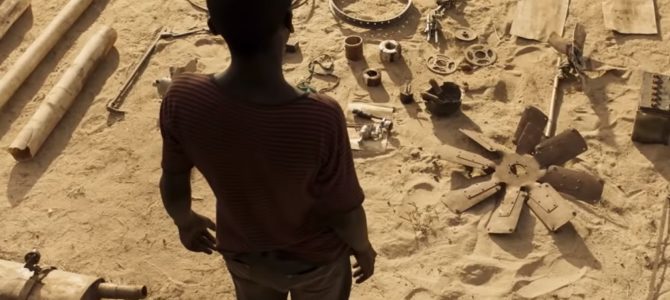
Some spoilers included.
They say necessity is the mother of invention. That aphorism was particularly apt for William Kamkwamba, who at age 14 constructed a wind turbine and saved his family from starvation. Netflix commemorated his 2006 engineering feat in “The Boy Who Harnessed the Wind,” screened at Sundance and released in early March. The movie is inspired by the eponymous autobiography coauthored by Kamkwamba and Brian Mealer.
Chiwetel Ejiofor stars as William’s father Trywell Kamkwamba. Best known for his title role as Solomon Northup in “Twelve Years a Slave” (2013), “Wind” also marks Ejiofor’s directorial motion picture debut. Maxwell Simba plays William in the supporting role. The sharp outlines of cinematography by Dick Pope reiterate that this harrowing story isn’t a fairy tale.
Unlike other teen prodigy films, such as “October Sky” (1999) and “Spare Parts” (2014), “Wind” revolves not around an esoteric hobby or scholarship contests, but devotes its object to the avoidance of starvation in a sun-baked and dusty landscape. Imagine living in Malawi, a country that has the population of New York state across an area nearly the size of Pennsylvania with a gross domestic product equivalent to that of Guam. That’s where Kamkwamba’s story takes place.
Kasungu, where William was born, lies 81 miles northwest of the capital Lilongwe, located in a sand veld (uncultivated grassland) with tobacco as the primary cash crop. The region receives a monthly average of seven inches of rain from December to March and none from July to September. The primary language is Chichewa.
Situated in southeastern Africa, landlocked Malawi borders Tanzania to the north, Mozambique to the south, and Zambia to the west. To provide some perspective, its longitude corresponds to the Crimea, while its southern latitude from the equator approximates that of Honduras in the north.
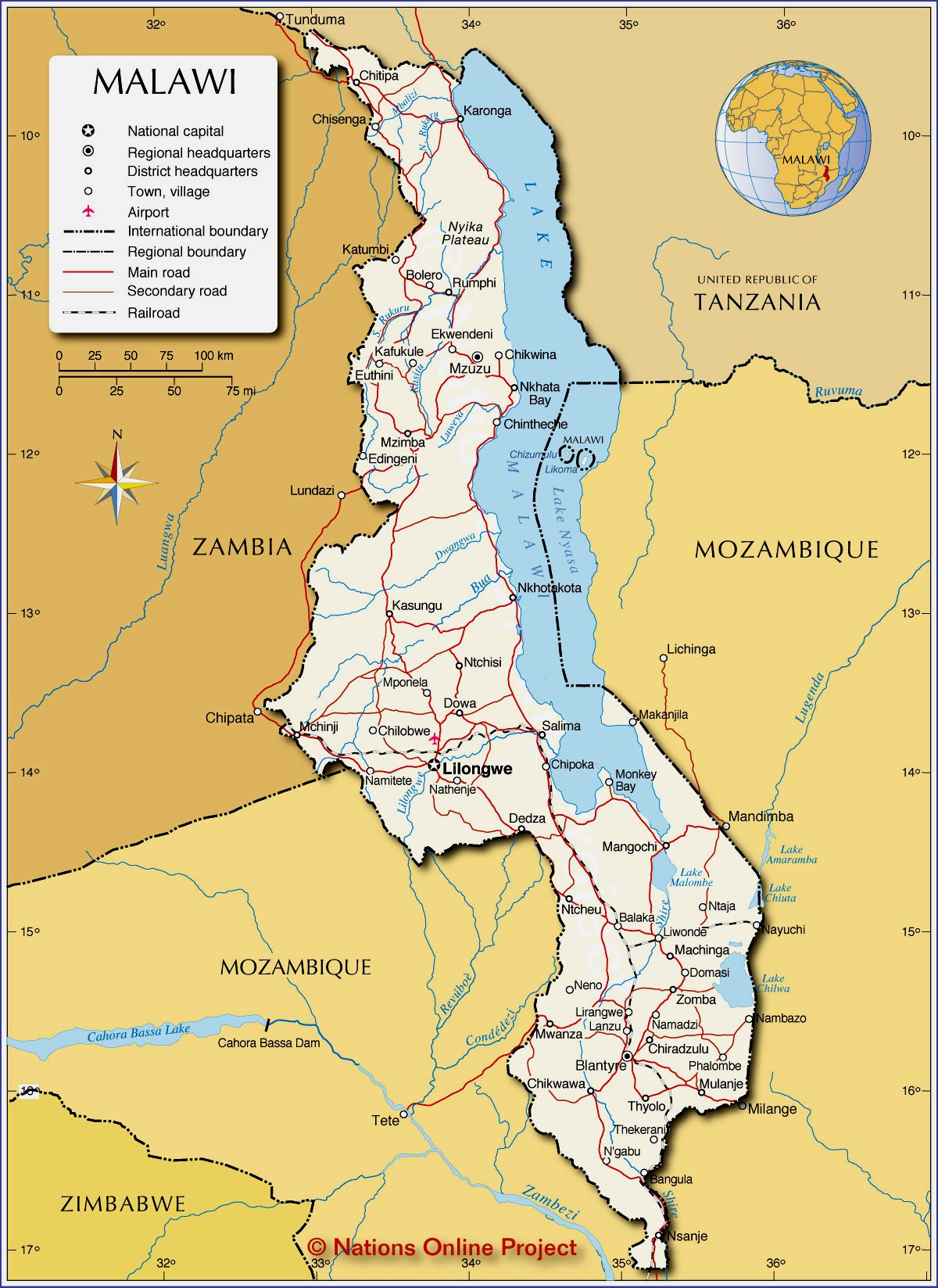
“Wind” illustrates the difficulties in eking out a living from subsistence farming—flash floods, exacerbated by deforestation, ruined crops, while the searing sun scorches the soil for much of the growing season. One scene depicts laborious lifting of a water bucket from a well, showcasing a harrowing reliance on a meager water supply, something residents of developed countries take for granted.
The film’s period is punctuated by the tangentially alluded to 9/11 attacks, which adversely affected prices at harvest. Recent famines in Malawi occurred in 2002 and 2005.
Despite the family’s desire for education, lack of money interrupts William’s formal education at school in Wimbe. But his inquisitive mind leads him to fix radios by rummaging for discarded salvageable electrical components in a local junkyard, where William also discovers an abandoned pump.
Barred from attending classes, he recognizes Mike Kachigunda, the school’s science teacher, furtively courting his older sister Annie. To avoid exposure, Kachigunda arranges William’s access to the school’s library for self-study. There, William encounters an eighth-grade textbook called “Using Energy,” and contemplates exploiting technologies’ secrets. He learns that the dynamo on Kachigunda’s bicycle converts mechanical to electrical energy.
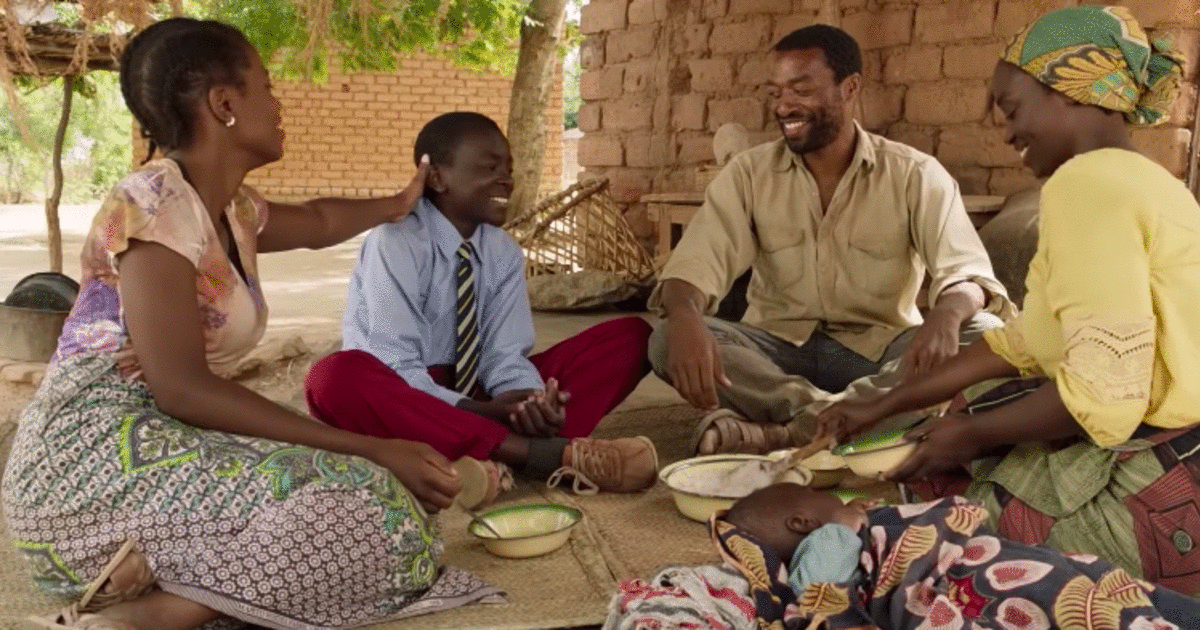
Crop failures and famine from drought lead to riots and government rationing. Looters rob the Kamkwamba family of their meager grain stores. Tensions rise between William’s mother Agnes and father Trywell from the precariousness of their fates.
In the film, William pleads with Annie for Kachigunda’s dynamo, and she successfully obtains the device for him before leaving her family. (A friend donated the money to purchase one.) Cobbling together a prototype generator, William powers a portable radio with a miniature windmill.
In one of the most poignant moments of the film, William explains its operation to his father and begs permission to dismantle the family’s bicycle to complete his fantastic plan. In angry desperation, Trywell crumples the assembly and berates his son for wasting effort. Trywell’s frustrated tirade signals his gnawing fear of defeat against the elements from inability to coax maize out of a parched land.
We sympathize with Trywell, but hope his precocious son succeeds. Eventually, Trywell reconciles and William assembles the needed components to construct a windmill large enough to energize the pump William scavenged earlier. He builds a voltage transformer and makes a propeller from a tractor fan with bamboo spokes each holding a flattened polyvinylchloride pipe for the blades.
He speeds up rotation by the bicycle sprockets held by their frame and connected by a belt. The bicycle wheel spins the acquired dynamo to deliver electric current to the pump.
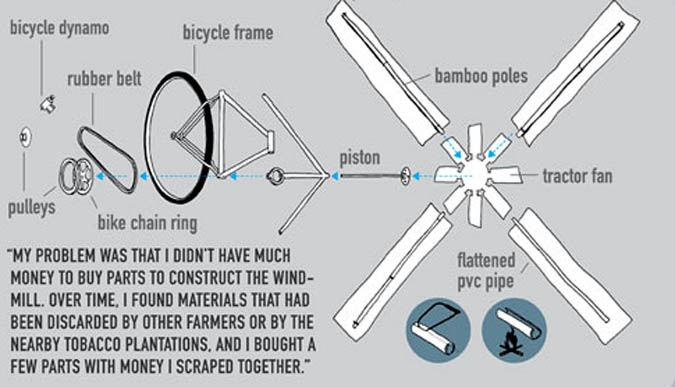
The family builds a tower to support the windmill assembly. The well supplies water raised by the newly powered pump to irrigate their fields so that planting commences even in the dry season. The film’s finale features William standing atop the tower in his climactic true-to-life triumph.
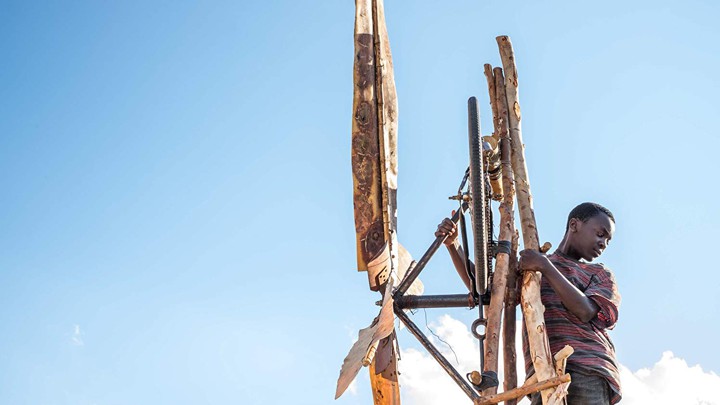
In 2014, William Kamkwamba graduated from Dartmouth College with a bachelor of arts in environmental science. His TED talk explains additional detail about his inventive efforts. That story—told in print and film—exemplifies how clever minds can solve technical problems and inspire us to meet even greater challenges.









